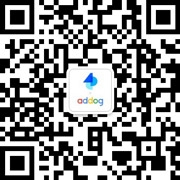
本案例默认翻译为中文,点击可切换回原语言
已切换成原语言,点击可翻译成中文
案例简介:执行 我们不确定谷歌会让我们的激活在他们的设备上工作多长时间,因此一切都将在 24 小时内发生。“15” 广告清楚地表明了我们的意图,要求谷歌通过他们的谷歌家庭设备告诉观众关于 Whopper 的情况。当我们的天才对着相机说 “好吧,谷歌”,告诉设备对接下来所说的 “华勃汉堡是什么” 做出反应时,这种搜索就开始了。 “在这一点上,任何耳机内的 Google Home 设备都会大声朗读 Whopper 的维基百科条目。我们首先在网上发布了这个广告,引起了互联网的巨大反响。如此之多,谷歌封锁了特定的音频剪辑几个小时后,在我们的广播首次亮相。但是我们已经准备好其他版本,这样谷歌就没有时间回应阻止这些版本,谷歌主页也再次激活了。 战略 不要相信我们的话。我们知道让第三方核实我们的说法会增加我们的吸引力,并最终吸引我们的华勃信息。Google Home 是一个智能家庭中心,它允许所有者提问并检查从维基百科中提取的事实。因此,当我们在设备中激活 Google Assistant 搜索时,结果将来自维基百科对汉堡王 Whopper 的条目,并通过网站的条目进行验证。尽管安装基础很小,但也有其他广泛报道称,这些智能家庭设备被他们无意中听到的东西引爆。因此,我们觉得正确的激活有机会超越安装基础,成为一个值得关注的故事,从而将华勃的信息传播到媒体购买之外。 活动描述 像 Google Home 这样的语音激活设备正在美国众议院获得采用,许多公司将这些设备放在客厅的电视或电脑附近。这些设备总是在听他们周围发生的事情,这使得它们对他们的主人很有用,他们可以要求他们检查天气或在线搜索事实。这给了我们一个想法: 如果电视现场和在线电影故意激活谷歌主页来完成信息, 有效地将我们的 “15 秒商业变成“ 30 ”,开始在电视和电脑上,结束在设备上?所以我们播放了一部电影,最后的问题是: “好吧,谷歌,华勃汉堡里有什么? ”并设法触发了数千台开始阅读 Whopper 维基百科页面所有成分列表的设备。 概要 汉堡王的招牌三明治,华勃,充满了新鲜的配料和味道预选赛 -- 太多了,他们不可能融入预先建立的: 15 第二次美国媒体在电视上购买。因此,为了延长 Whopper 的 15 个 TVC,我们转向语音激活的虚拟助理 Google Home,并故意激活它,通过阅读 Whopper 的维基百科条目来完成我们的信息。随后成为有史以来第一个使用声控虚拟助理来延长 TVC 长度和影响的广告。有些人称之为天才,有些人称之为入侵。但共识是明确的: 随着 15 秒的 TVC,汉堡王开始了一场关于语音激活助理的脆弱性和侵入性的辩论, 以及他们在广告中无休止地寻求进入客厅的角色,同时成功地将华勃的新鲜成分和味觉限定符放在数十亿舌头的顶端。 结果 这个想法赢得了 93亿的全球印象。它成为 YouTube 、 Facebook 、推特和谷歌趋势上的全球热门话题,成为汉堡王历史上最受关注的电视节目和最活跃的视频。该现货在美国媒体上获得了 3500万美元,品牌提及增加了 500%。在首次发射后的 48 小时内,该地点在网上被有机地观看了 1000万次。与它瞄准的 1500万台谷歌家庭设备相比,它总共有 700,000 次在线观看。汉堡王成为有史以来第一个使用声控技术为产品做广告的品牌,并围绕广告和侵入性技术的局限性展开了辩论。在现场播出后的几天内,谷歌主页改变了它的软件,最多只能识别 6 个声音。来源: CisionABMCWeber ShandwickHawkeye MonitoringKetchumCode & TheoryCrimson HexagonYouTube 推特洞察 DashboardFacebook 趋势谷歌趋势
案例简介:Execution We weren’t sure how long Google would allow our activation to work on their device, therefore everything was set to happen around a 24 hour period. The ''15 commercial makes it clear our intention, to ask Google to tell the viewer about the Whopper through their Google Home device. This search is set off when our talent says into the camera “Okay Google” telling the device to react to what is said next “what is The Whopper burger?” At this point, any Google Home device within earshot would read aloud the Wikipedia entry for the Whopper. We first released the advert online, setting off a big internet response. So much so, Google blocked the specific audio clip hours later, ahead of our broadcast debut. But we were ready with other versions, so that Google wouldn’t have time to respond to block these and the Google Home was activating again. Strategy Don’t take our word for it. We knew having a third party verify our claims would add va-lidity and ultimately taste appeal to our Whopper message. Google Home is a smart home centre which lets its owners ask questions and check facts pulled from Wikipedia. Therefore, when we activated the Google Assistant search in the device, the result would come from Wikipedia’s entry for the Burger King Whopper and be validated by the site’s entry. And despite the small install base, there had been other widely reported instances of these smart home devices being set off by things they overheard. There-fore we felt the right activation had the chance to transcend the install base and become a buzz-worthy story, thereby spreading the Whopper message well beyond the media buy. CampaignDescription Voice activated devices such as Google Home are gaining adoption within US House-holds, with many keeping these devices in their living rooms near their TVs or computers.These devices are always listening to what is happening around them, which makes them useful for their owners who can ask them to check the weather or search for facts online. Which gave us the idea: what if a TV spot and online film intentionally activated the Google Home in order to finish the message, effectively turning our ''15 second commercial into a ''30 that started on TVs and computers, and ended on the device? So we aired a film that ended with the question: “Ok Google, what is in the Whopper Burger?” and managed to trigger thousands of devices that started reading all the list of ingredients from The Whopper’s Wikipedia page. Synopsis Burger King’s signature sandwich, The Whopper, is full of fresh ingredients and taste qualifiers – so many that they can’t possibly fit inside a pre-established :15 second US media buy on television. So to extend a ''15 TVC for The Whopper, we turned to the voice-activated virtual assistant Google Home, and intentionally activated it to finish our message by reading The Whopper’s Wikipedia entry. What followed became the first ever commercial that used a voice-activated virtual assistant to extend the length & impact of a TVC. Some called it genius, others called it invasive. But the consensus was clear: with a ''15 second TVC, Burger King had started a debate around the vulnerability and intrusiveness of voice-activated assistants, and their role in advertising’s never-ending quest to enter the living room, while successfully putting The Whopper’s fresh ingredients and taste qualifiers on the tips of billions of tongues. Outcome The idea earned 9.3 billion global impressions. It became a global trending topic on YouTube, Facebook, Twitter, and Google Trends, making it Burger King’s most talked about TV spot and most engaged video in the brand’s history. The spot earned $35 million in US media, and created a 500% increase in brand mentions. Within 48 hours of initial launch, the spot was viewed organically 10 million times online. It totaled 15 million online-only views, vs. the 700,000 Google Home devices it targeted. Burger King became the first brand ever to use voice-activated tech to advertise a product, and started a debate around the limits of advertising and invasive technology. Within days after the spot aired, Google Home changed its software to recognize up to 6 voices only.Sources:CisionABMCWeber ShandwickHawkeye MonitoringKetchumCode & TheoryCrimson HexagonYouTube Twitter Insights DashboardFacebook TrendsGoogle Trends
汉堡的谷歌之家 | Google Home of the Whopper
案例简介:执行 我们不确定谷歌会让我们的激活在他们的设备上工作多长时间,因此一切都将在 24 小时内发生。“15” 广告清楚地表明了我们的意图,要求谷歌通过他们的谷歌家庭设备告诉观众关于 Whopper 的情况。当我们的天才对着相机说 “好吧,谷歌”,告诉设备对接下来所说的 “华勃汉堡是什么” 做出反应时,这种搜索就开始了。 “在这一点上,任何耳机内的 Google Home 设备都会大声朗读 Whopper 的维基百科条目。我们首先在网上发布了这个广告,引起了互联网的巨大反响。如此之多,谷歌封锁了特定的音频剪辑几个小时后,在我们的广播首次亮相。但是我们已经准备好其他版本,这样谷歌就没有时间回应阻止这些版本,谷歌主页也再次激活了。 战略 不要相信我们的话。我们知道让第三方核实我们的说法会增加我们的吸引力,并最终吸引我们的华勃信息。Google Home 是一个智能家庭中心,它允许所有者提问并检查从维基百科中提取的事实。因此,当我们在设备中激活 Google Assistant 搜索时,结果将来自维基百科对汉堡王 Whopper 的条目,并通过网站的条目进行验证。尽管安装基础很小,但也有其他广泛报道称,这些智能家庭设备被他们无意中听到的东西引爆。因此,我们觉得正确的激活有机会超越安装基础,成为一个值得关注的故事,从而将华勃的信息传播到媒体购买之外。 活动描述 像 Google Home 这样的语音激活设备正在美国众议院获得采用,许多公司将这些设备放在客厅的电视或电脑附近。这些设备总是在听他们周围发生的事情,这使得它们对他们的主人很有用,他们可以要求他们检查天气或在线搜索事实。这给了我们一个想法: 如果电视现场和在线电影故意激活谷歌主页来完成信息, 有效地将我们的 “15 秒商业变成“ 30 ”,开始在电视和电脑上,结束在设备上?所以我们播放了一部电影,最后的问题是: “好吧,谷歌,华勃汉堡里有什么? ”并设法触发了数千台开始阅读 Whopper 维基百科页面所有成分列表的设备。 概要 汉堡王的招牌三明治,华勃,充满了新鲜的配料和味道预选赛 -- 太多了,他们不可能融入预先建立的: 15 第二次美国媒体在电视上购买。因此,为了延长 Whopper 的 15 个 TVC,我们转向语音激活的虚拟助理 Google Home,并故意激活它,通过阅读 Whopper 的维基百科条目来完成我们的信息。随后成为有史以来第一个使用声控虚拟助理来延长 TVC 长度和影响的广告。有些人称之为天才,有些人称之为入侵。但共识是明确的: 随着 15 秒的 TVC,汉堡王开始了一场关于语音激活助理的脆弱性和侵入性的辩论, 以及他们在广告中无休止地寻求进入客厅的角色,同时成功地将华勃的新鲜成分和味觉限定符放在数十亿舌头的顶端。 结果 这个想法赢得了 93亿的全球印象。它成为 YouTube 、 Facebook 、推特和谷歌趋势上的全球热门话题,成为汉堡王历史上最受关注的电视节目和最活跃的视频。该现货在美国媒体上获得了 3500万美元,品牌提及增加了 500%。在首次发射后的 48 小时内,该地点在网上被有机地观看了 1000万次。与它瞄准的 1500万台谷歌家庭设备相比,它总共有 700,000 次在线观看。汉堡王成为有史以来第一个使用声控技术为产品做广告的品牌,并围绕广告和侵入性技术的局限性展开了辩论。在现场播出后的几天内,谷歌主页改变了它的软件,最多只能识别 6 个声音。来源: CisionABMCWeber ShandwickHawkeye MonitoringKetchumCode & TheoryCrimson HexagonYouTube 推特洞察 DashboardFacebook 趋势谷歌趋势
汉堡的谷歌之家 | Google Home of the Whopper
案例简介:Execution We weren’t sure how long Google would allow our activation to work on their device, therefore everything was set to happen around a 24 hour period. The ''15 commercial makes it clear our intention, to ask Google to tell the viewer about the Whopper through their Google Home device. This search is set off when our talent says into the camera “Okay Google” telling the device to react to what is said next “what is The Whopper burger?” At this point, any Google Home device within earshot would read aloud the Wikipedia entry for the Whopper. We first released the advert online, setting off a big internet response. So much so, Google blocked the specific audio clip hours later, ahead of our broadcast debut. But we were ready with other versions, so that Google wouldn’t have time to respond to block these and the Google Home was activating again. Strategy Don’t take our word for it. We knew having a third party verify our claims would add va-lidity and ultimately taste appeal to our Whopper message. Google Home is a smart home centre which lets its owners ask questions and check facts pulled from Wikipedia. Therefore, when we activated the Google Assistant search in the device, the result would come from Wikipedia’s entry for the Burger King Whopper and be validated by the site’s entry. And despite the small install base, there had been other widely reported instances of these smart home devices being set off by things they overheard. There-fore we felt the right activation had the chance to transcend the install base and become a buzz-worthy story, thereby spreading the Whopper message well beyond the media buy. CampaignDescription Voice activated devices such as Google Home are gaining adoption within US House-holds, with many keeping these devices in their living rooms near their TVs or computers.These devices are always listening to what is happening around them, which makes them useful for their owners who can ask them to check the weather or search for facts online. Which gave us the idea: what if a TV spot and online film intentionally activated the Google Home in order to finish the message, effectively turning our ''15 second commercial into a ''30 that started on TVs and computers, and ended on the device? So we aired a film that ended with the question: “Ok Google, what is in the Whopper Burger?” and managed to trigger thousands of devices that started reading all the list of ingredients from The Whopper’s Wikipedia page. Synopsis Burger King’s signature sandwich, The Whopper, is full of fresh ingredients and taste qualifiers – so many that they can’t possibly fit inside a pre-established :15 second US media buy on television. So to extend a ''15 TVC for The Whopper, we turned to the voice-activated virtual assistant Google Home, and intentionally activated it to finish our message by reading The Whopper’s Wikipedia entry. What followed became the first ever commercial that used a voice-activated virtual assistant to extend the length & impact of a TVC. Some called it genius, others called it invasive. But the consensus was clear: with a ''15 second TVC, Burger King had started a debate around the vulnerability and intrusiveness of voice-activated assistants, and their role in advertising’s never-ending quest to enter the living room, while successfully putting The Whopper’s fresh ingredients and taste qualifiers on the tips of billions of tongues. Outcome The idea earned 9.3 billion global impressions. It became a global trending topic on YouTube, Facebook, Twitter, and Google Trends, making it Burger King’s most talked about TV spot and most engaged video in the brand’s history. The spot earned $35 million in US media, and created a 500% increase in brand mentions. Within 48 hours of initial launch, the spot was viewed organically 10 million times online. It totaled 15 million online-only views, vs. the 700,000 Google Home devices it targeted. Burger King became the first brand ever to use voice-activated tech to advertise a product, and started a debate around the limits of advertising and invasive technology. Within days after the spot aired, Google Home changed its software to recognize up to 6 voices only.Sources:CisionABMCWeber ShandwickHawkeye MonitoringKetchumCode & TheoryCrimson HexagonYouTube Twitter Insights DashboardFacebook TrendsGoogle Trends
暂无简介
汉堡的谷歌之家 | Google Home of the Whopper
暂无简介
基本信息
- 广告战役: #汉堡王-网络-52f21#
- 广告品牌: 汉堡王
- 发布日期: 2000
- 行业领域: 饮食/特产
- 媒体类别: 短视频
- 广告语言: 英语
- 媒介平台: 网络
-
获得奖项:
- Cannes Lions 2018 金奖 社交与影响力(Innovation > Emerging Platforms)
- Design and Art Direction 2018 黄铅笔 广播与音频(Innovative Use of Radio & Audio)
- Design and Art Direction 2018 石墨铅笔 数字营销(Innovative Use of Technology)
- The One Show 2018 金铅笔 直效(Innovation in Direct)
- The One Show 2018 金铅笔 社交媒体(Social Engagement / Community Building)
- The One Show 2018 金铅笔 社交媒体(Innovation in Film / Online)
- Cannes Lions 2017 大奖 直效(Use of Broadcast)
- Cannes Lions 2017 金奖 直效(Use of Technology)
- Cannes Lions 2017 金奖 移动应用(Cross-device Campaign)
- Cannes Lions 2017 银奖 网络(Cross-device Campaign)
- Cannes Lions 2017 银奖 直效(Retail, e-Commerce, Restaurants & Fast Food Chains)
- Cannes Lions 2017 银奖 娱乐(Excellence in Audience Engagement or Distribution Strategy for Branded Content)
- Cannes Lions 2017 银奖 移动应用(Real-time Response)
- Cannes Lions 2017 银奖 移动应用(Activation by Proximity)
- Cannes Lions 2017 铜奖 创意数据(Data Storytelling)
- Cannes Lions 2017 铜奖 网络(Interactive Video)
- Cannes Lions 2017 铜奖 网络(Innovative Use of Social or Community)
- Cannes Lions 2017 铜奖 媒介应用(Use of TV)
- Cannes Lions 2017 铜奖 媒介应用(Use of Audio Platforms)
- Cannes Lions 2017 铜奖 推广活动(Retail, e-Commerce, Restaurants & Fast Food Chains)
- Cannes Lions 2017 入围 设计(Omni-channel Experience)
- Cannes Lions 2017 入围 数字制作(Rich Media)
- Cannes Lions 2017 入围 直效(Use of Digital Platforms)
- Cannes Lions 2017 入围 媒介应用(Use of Integrated Media)
- Cannes Lions 2017 入围 移动应用(Connected Devices)
- Cannes Lions 2017 入围 钛狮(Titanium)
暂无评分
已有{{caseInfo.tatolPeople}}人评分
创作者
案例详情
涵盖全球100万精选案例,涉及2800个行业,包含63000个品牌
热门节日97个,23个维度智能搜索
-

项目比稿
品类案例按时间展现,借鉴同品牌策略,比稿提案轻松中标
-

创意策划
任意搜索品牌关键词,脑洞创意策划1秒呈现
-

竞品调研
一键搜索竞品往年广告,一眼掌握对手市场定位
-

行业研究
热词查看洞悉爆点,抢占行业趋势红利
登录后查看全部案例信息
如果您是本案的创作者或参与者 可对信息进行完善







